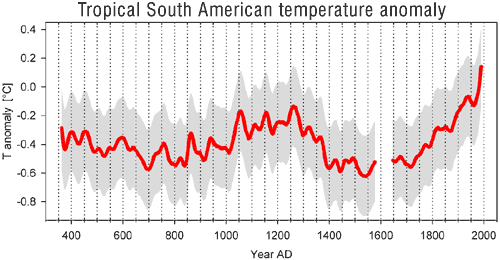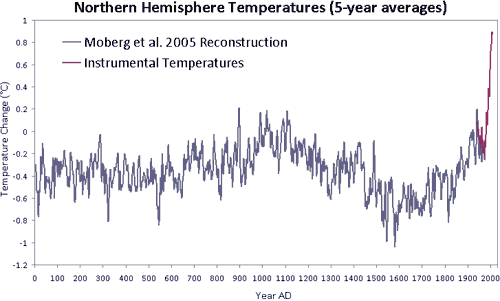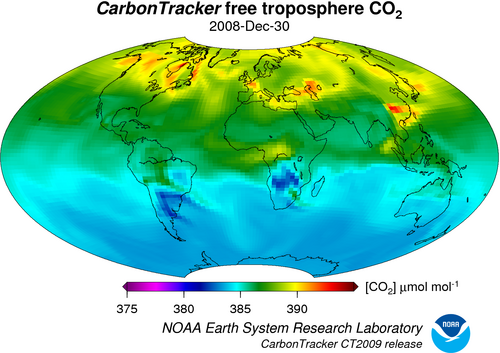A South American hockey stick
Posted on 18 September 2010 by John Cook
A new paper has just been published employing a new technique for reconstructing past temperatures (Kellerhals 2010). It uses Ammonium concentration from an ice core in tropical South America (the eastern Bolivian Andes) as a proxy for temperature. This enables them to build a temperature record going back 1600 years in a region which has had little proxy data available until now. They find a distinguishable Medieval Warm Period and Little Ice Age in the record. Nevertheless, they also find the last few decades show unprecedented warmth over the last 1600 years.

Figure 1: Reconstructed tropical South American temperature anomalies (normalized to the 1961–1990AD average) for the last 1600 years (red curve, smoothed with a 39?year Gaussian filter). The shaded region envelops the ±2 standard deviation uncertainty as derived from the validation period. Poor core quality precluded any chemical analysis for the time interval between 1580 and 1640 AD.
Note that Figure 1 shows only the proxy record from the ice core - no instrumental data is included. Of course, the usual caveat applies when looking at a single proxy record - this is a temperature record for a single location.To get a better feel for past climate, you need to look at proxy records from a range of locations.
When we combine all the various temperature records, we find the same result: modern temperatures are significantly warmer than medieval temperatures. This is demonstrated in Moberg's reconstruction of Northern Hemisphere temperature (which happens to bear a striking resemblance to the South American proxy record).

Figure 2: Northern Hemisphere Temperature Reconstruction by Moberg et al. (2005) shown in blue, Instrumental Northern Hemisphere Temperatures from Hadley shown in Red. Thanks to Robert Way for providing this graph.































 Arguments
Arguments























 0
0  0
0 http://newsimg.bbc.co.uk/media/images/46320000/gif/_46320407_arctic_temperatures_466gr.gif
http://newsimg.bbc.co.uk/media/images/46320000/gif/_46320407_arctic_temperatures_466gr.gif
 click for full scale at source page Change to 'global' 12-31-08
At the time of that image the N/S total variation was indeed about 15 ppm. In the first image in the global data set, 1/1/01, it was only 8 ppm. So the discrepancy between hemispheres has doubled in 9 years? That's no natural cycle.
And 15ppm? At 395ppm, the delta F is 1.84; at 380ppm, delta F is 1.63, a difference of 11%. Seems like a lot.
click for full scale at source page Change to 'global' 12-31-08
At the time of that image the N/S total variation was indeed about 15 ppm. In the first image in the global data set, 1/1/01, it was only 8 ppm. So the discrepancy between hemispheres has doubled in 9 years? That's no natural cycle.
And 15ppm? At 395ppm, the delta F is 1.84; at 380ppm, delta F is 1.63, a difference of 11%. Seems like a lot.







Comments